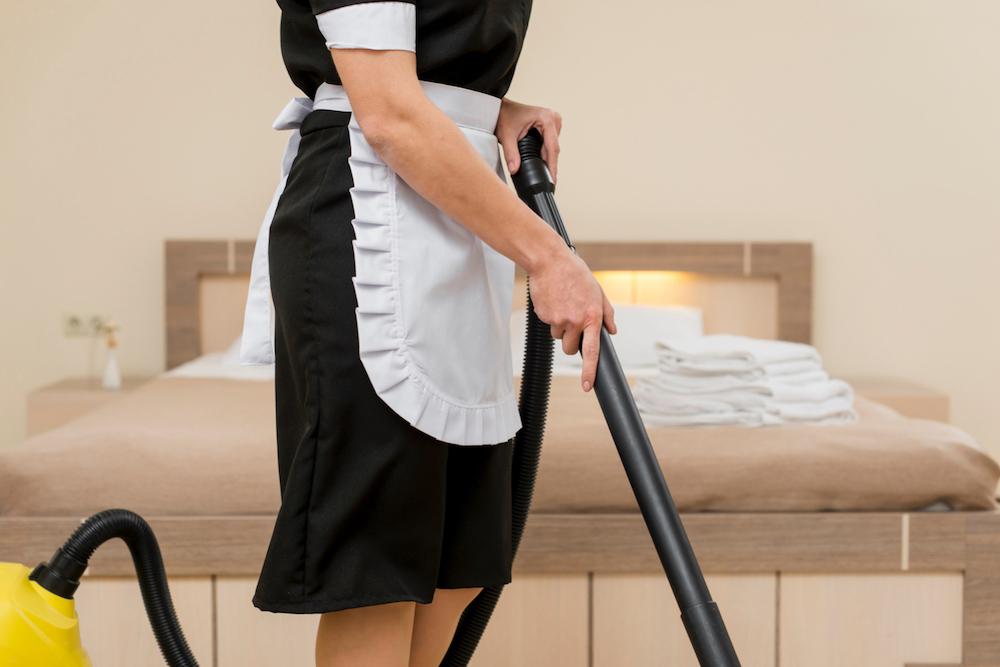Having a kasambahay can be a lifesaver as she can lighten the load of taking care of the little ones and the daily chores that keep a household running orderly. If you have been faced with the dilemma of whether to get a full-time, stay-in helper who lives with you or a stay-out helper who goes home at the end of the day, we came up with some questions to ask yourself before making your decision.

First, make a list of the main tasks your helper will do: Will she be taking care of household chores like cleaning, cooking, and/or laundry? Will she be more focused on nanny duties? Or will she be doing some of all?
Second, think about how many hours you’ll need your helper to put in. If you and your partner/husband both work, will you both be gone for most of the day? To what extent will she need to care for other members of your household (such as young children, elderly, or pets)?
Your answers to the questions above will help you gauge your needs and whether you’d need someone who will stay in or stay out. To help you decide, here’s a list of factors to consider when deciding between a stay-in and stay-out kasambahay:
Cost: A stay-out or part-time helper usually costs less since she’d go to work only on certain days and you’d only provide a daily wage, transportation, and food. Meanwhile, having a full-time helper stay with you means you’ll bear the daily living costs as well as government-required benefits such as PhilHealth, SSS, and Pag-Ibig, and 13th month pay aside from a monthly salary. Many employers also provide food and toiletries for their kasambahays.
Predictability: A stay-in helper can start bright and early since she’ll have no commute time (she will spend less on transportation costs, too). There’ll be less chance that you’ll be left in the dark in case your stay-out helper suddenly can’t come to work.
Flexibility: A stay-in helper can often work more than 8 hours and can be present to provide support in emergencies. However, take note that the Domestic Workers Act states that kasambahays must have at least 8 hours of rest daily and scheduled rest days or days off.

Stability: A stay-in helper is more likely to stick to the job longer (if she is comfortable and settled in your home) than a stay-out or part-time maid since the latter is exposed to more job opportunities outside your home.
Privacy: You have to learn to be comfortable with the presence of a stay-in helper in your home. As a part of your household, she’d also likely be privy to some private information about you and your family. It’s a given that she should have her own space (ideally her own room and bathroom) where she can rest safely and where she can keep her belongings.
Security: There would have to be a level of trust for you to have a live-in helper. You need to decide whether you’re comfortable leaving her alone if your whole family leaves the house for a weekend, and whether you trust her to watch over your children when you are at work, for instance.
Safety: With the threat of COVID as part of the new normal, there may be a higher risk with a stay-out helper who comes and goes each day and who’s not a part of your “safety bubble” (meaning, she meets and interacts with people other than your household).
Getting help can be a godsend but as you may have guessed, there is no straight answer to the question of whether you should get a stay-in or stay-out kasambahay. As the needs and preferences of every household differ, it’s best to weigh the pros and cons and consider which arrangement would best fit your needs and lifestyle.
Whichever you choose, one thing is certain: You’d need to maintain a good working relationship with your household help. To do this, you’d need mutual respect and communication. -By Maris Mortel-Hiruntrakul
Thanks to these ladies for their insights: Gillian Vitug-Sanchez, Janelle Dela Cruz-Galang, Kimbee Del Mundo-Magdato, Luanne Tolentino-Sulit, Kat Pangilinan-Leyble, Olivia Villacorta, Shen Pena-Garrovillo, Yeye Sarreal

Leave a Reply